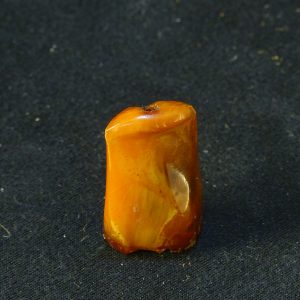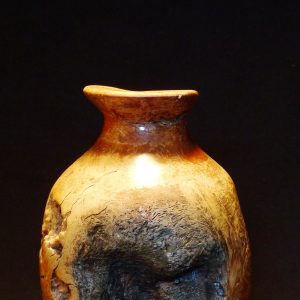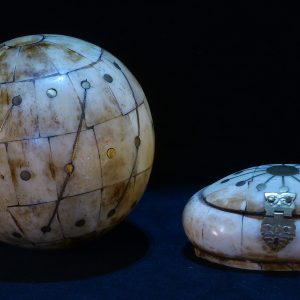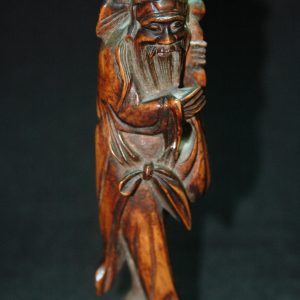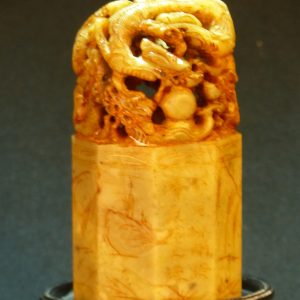Description
寿山石龙凤镂空雕石印钮龙凤 炉顶/章料
参考:苏富比 1
典樸瑞涵-EMIL HULTMARK 雅藏中國藝術品
EMIL HULTMARK (1872 – 1943) 舊藏
元 白玉鏤雕穿花龍紋爐頂
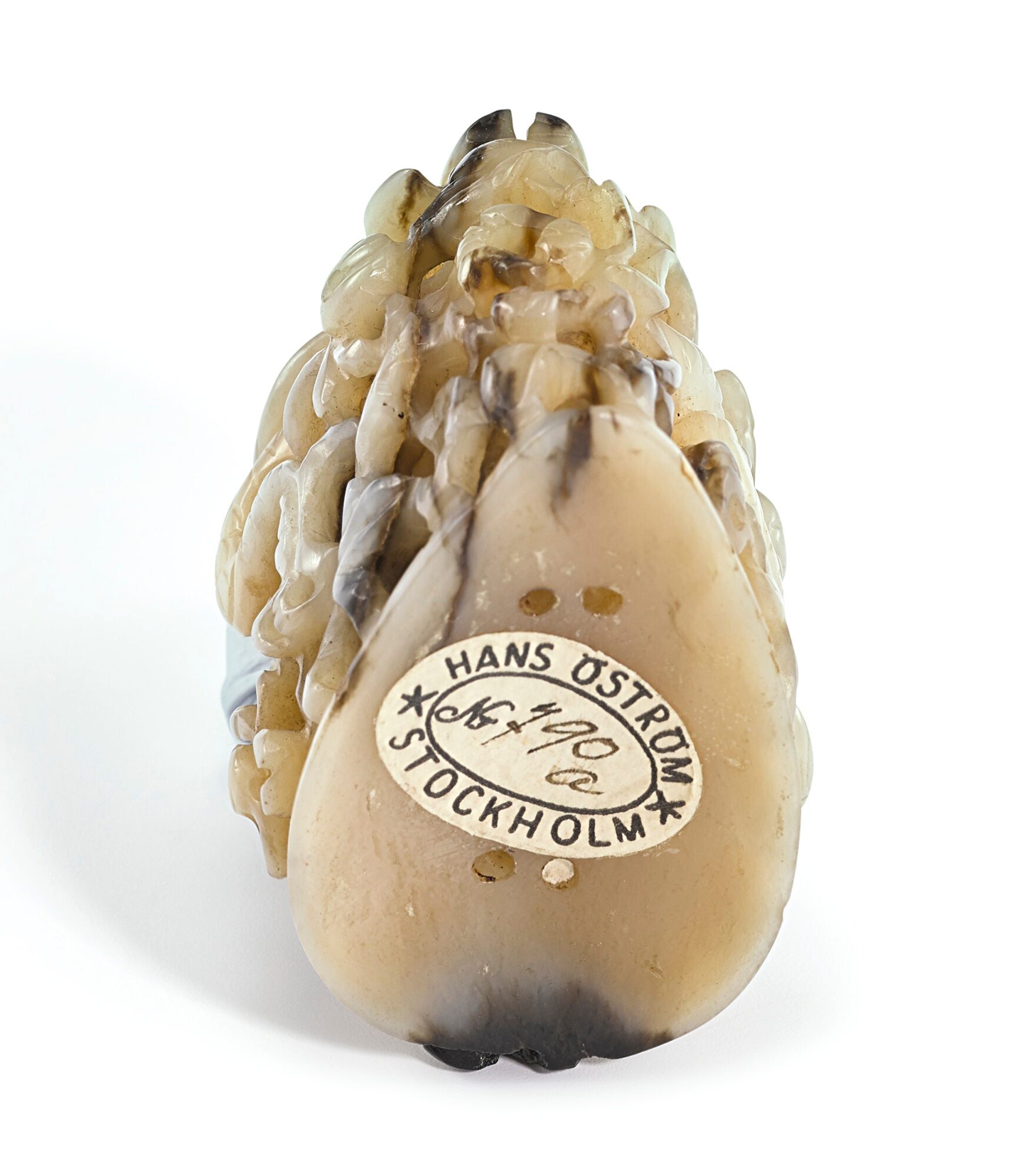
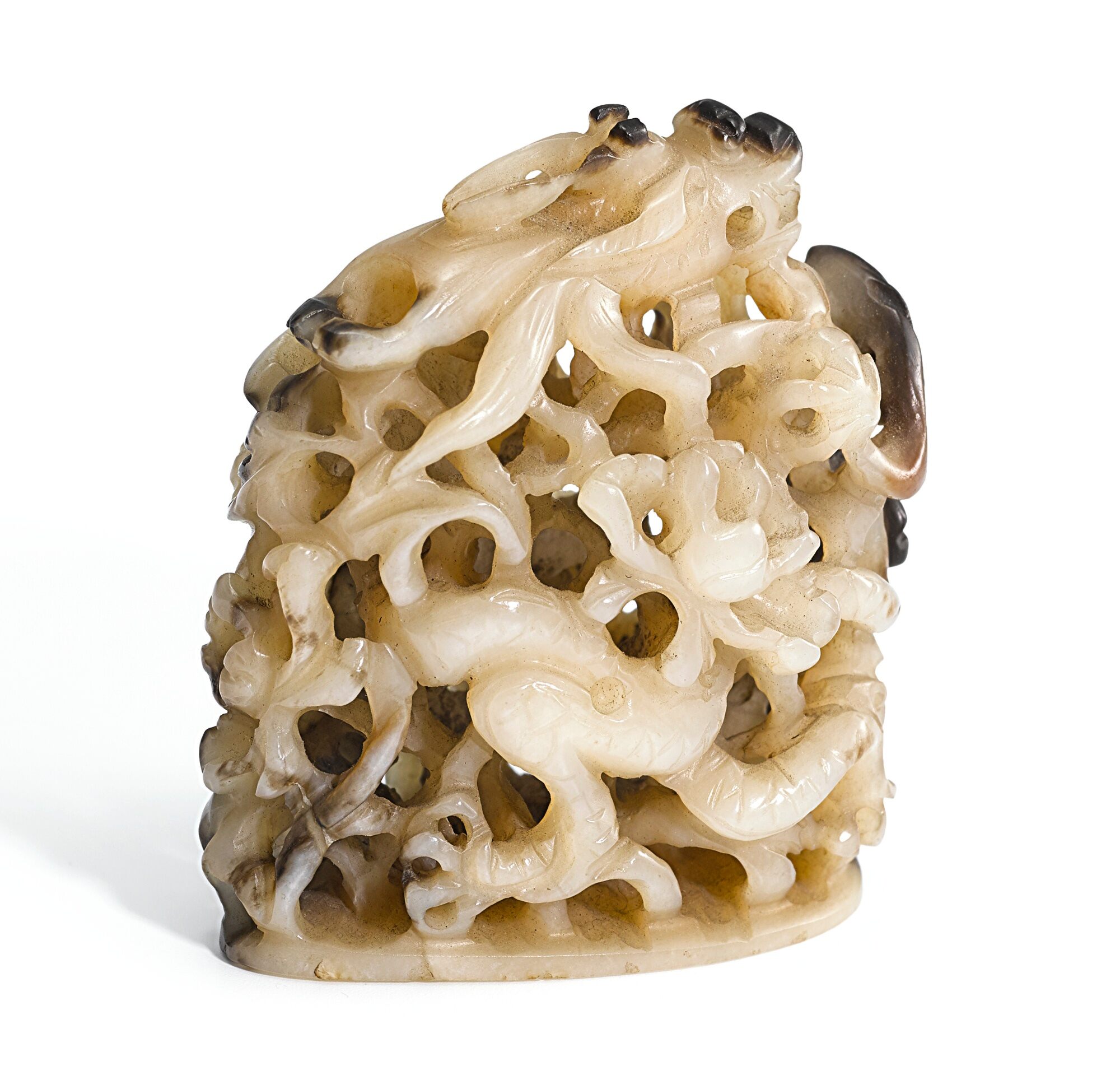
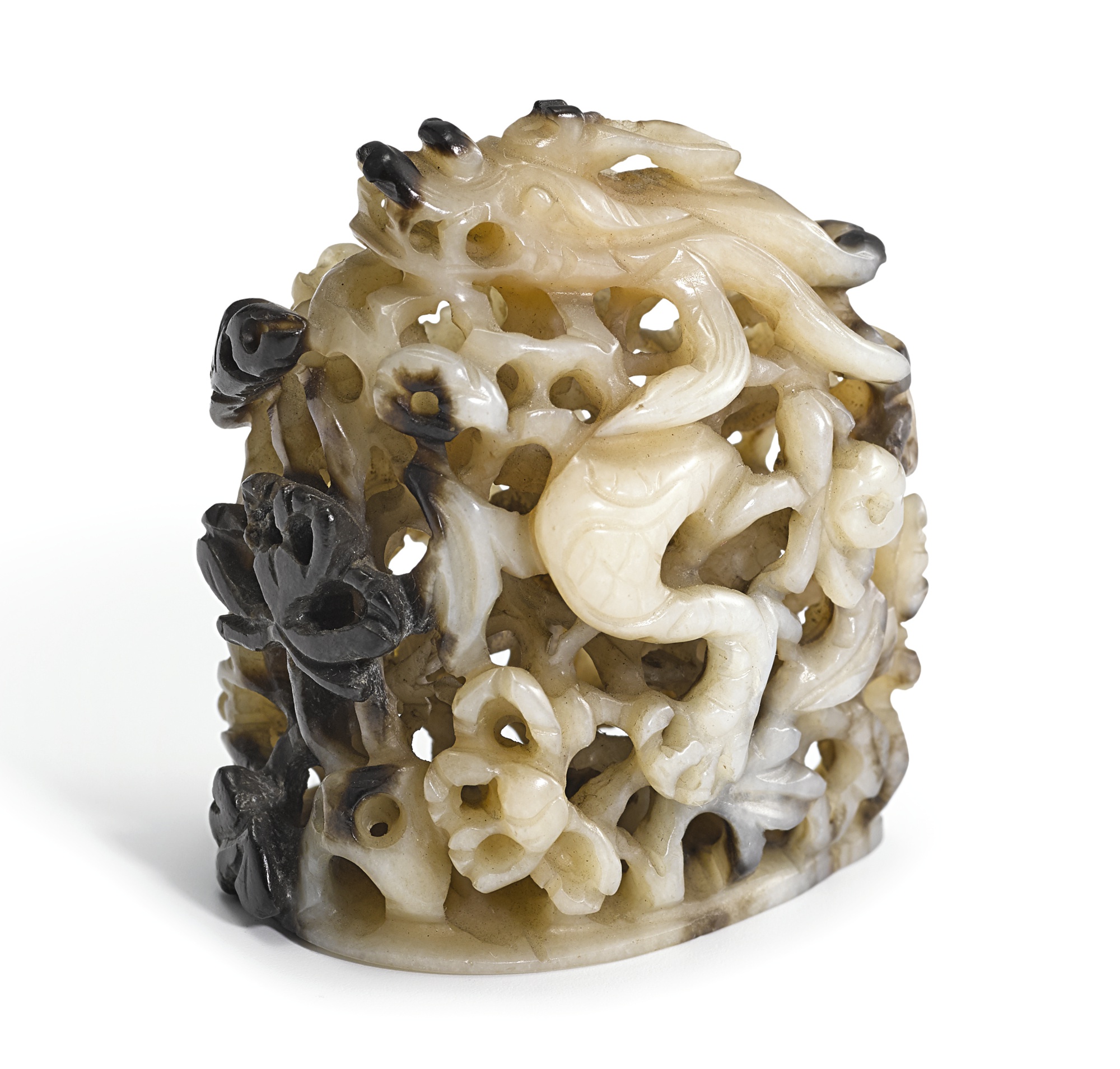
40,000 — 60,000港幣
拍品已售 250,000 港幣 成交價 (含買家佣金)
拍品詳情
元 白玉鏤雕穿花龍紋爐頂
4.6 公分,1 3/4 英寸
狀況報告
來源
Hans Öström 收藏,斯德哥爾摩
Emil Hultmark (1872-1943年) 舊藏,此後家族傳承
相關資料
可參考一龍紋類例,台北故宮博物院藏,展覽並載錄於《大汗的世紀:蒙元時代的多元文化與藝術》,台北,2001年,編號IV-7。另可參考一北京故宮博物院藏類例,載錄於《故宫博物院藏品大系玉器:明》,卷6,北京,2011年,圖版110。湖北省鍾祥市梁莊王朱瞻與王妃魏氏墓出土也有一例,展覽於《明朝:改變中國的50年》,大英博物館,倫敦,2015年,編號46。另見一明代例子,售於香港蘇富比2018年10月3日,編號3355,以及一件為沐文堂收藏,售於香港蘇富比2016年12月1日,編號170。
Brian S. McElney 在其專文〈Han to Song Chinese Jades〉中指出,此類鏤空玉飾此前未見,「應始於金而盛於元」,大多為琢玉技術大幅進步的成果。見 Roger Keverne 編,《Jade》,倫敦,1991年,頁118。另可參考大英博物館藏相類例子及有關討論,詳見羅森,《Chinese Jade from the Neolithic to the Qing》,倫敦,1995年,頁338-339,圖版25:15。
歐洲收藏中國藝術品的黃金時代
本場專拍呈獻之一系列工藝珍品,均屬瑞典學者 Emil Hultmark(1872-1943年)收藏,令人遙想起上世紀早期收藏家開拓中國藝術品研究領域的重大貢獻。1920年,Emil Hultmark 與卡爾肯普(1884-1967年)和瑞典王儲古斯塔夫六世·阿道夫在斯德哥爾摩合創 Kinaklubben 中國學會;同時代的歐洲收藏名家有如喬治・尤莫弗普勒斯(1863-1939年)、英國大維德爵士(1892-1964年)、瑞士阿爾弗雷德·鮑爾(1865-1951年)等。大維德爵士與喬治・尤莫弗普勒斯舊藏現由倫敦大英博物館及維多利亞與艾伯特博物館珍存,鮑爾收藏有日內瓦鮑氏東方藝術館專門展示;Hultmark 的收藏部分現存斯德哥爾摩遠東古物博物館,與瑞典皇室收藏並列。上述收藏家的珍藏,對西方藏家學習認識中國藝術皆有莫大裨益。
上世紀初,古物研究相關文獻甚少,收藏家大多自編文獻及展覽圖錄。他們依賴與同行、俱樂部和古物研究學會成員互相交流,以辨藏品來歷真偽,並定期舉辦收藏展覽。
1942年斯德哥爾摩皇家美術學院曾舉辦一場 Emil Hultmark 收藏特展(圖一),展品包括本場其中數件拍品。該展呈覽東方藝術及十七、十八世紀瑞典油畫,以及 Hultmark 收藏中赫赫有名的銀器及貴金屬工藝品。
Emil 與 Astrid Hultmark 伉儷對藏品珍愛有加,並佈置於各宅邸,讓賓客盡覽各類藝珍。二人在斯德哥爾摩及 Stogestrabo (圖二)的宅邸內安排多個房間展示中國及日本藝術品,有一篇專題文章可供考證(《Svenska hem i ord och bilder》,斯德哥爾摩,1936年,頁169-203)。Hultmark 伉儷的斯德哥爾摩大宅位於列雅街32號,屋內兩個沙龍客廳以東方文化為主題,其中黑色廳內擺放黑漆家具及青銅器,紅色廳則擺放瓷器及漆器(圖三)。
本系列拍品涵蓋早期青銅玉器以至明初瓷器,悉為當時歐洲中國藝術收藏中的精品,尤以明永樂御製剔紅雲龍趕珠紋蓋盒(拍品編號2)為最。此類雲龍紋蓋盒極為罕見,存世品多由博物館收藏,拍賣場上僅出現過數次。香港蘇富比於2012年四月曾售出一例,此外 Frederick Knight 舊藏一件類例,1982年5月18日售於香港蘇富比,編號45。此稀世漆雕珍品,與本場拍賣其他佳器,悉由藏家在1930年代購於歐洲,此後一直由家族後人珍藏,可稱為歐洲收藏中國藝術品黃金時代的珍貴見證。
典樸瑞涵-EMIL HULTMARK 雅藏中國藝術品
2018年11月29日 | 上午 10:00 HKT
香港
参考:苏富比 3335
靈動凝神:長壽坊珍藏肖生玉雕
宋 白玉透雕鷺鷥蓮紋爐頂
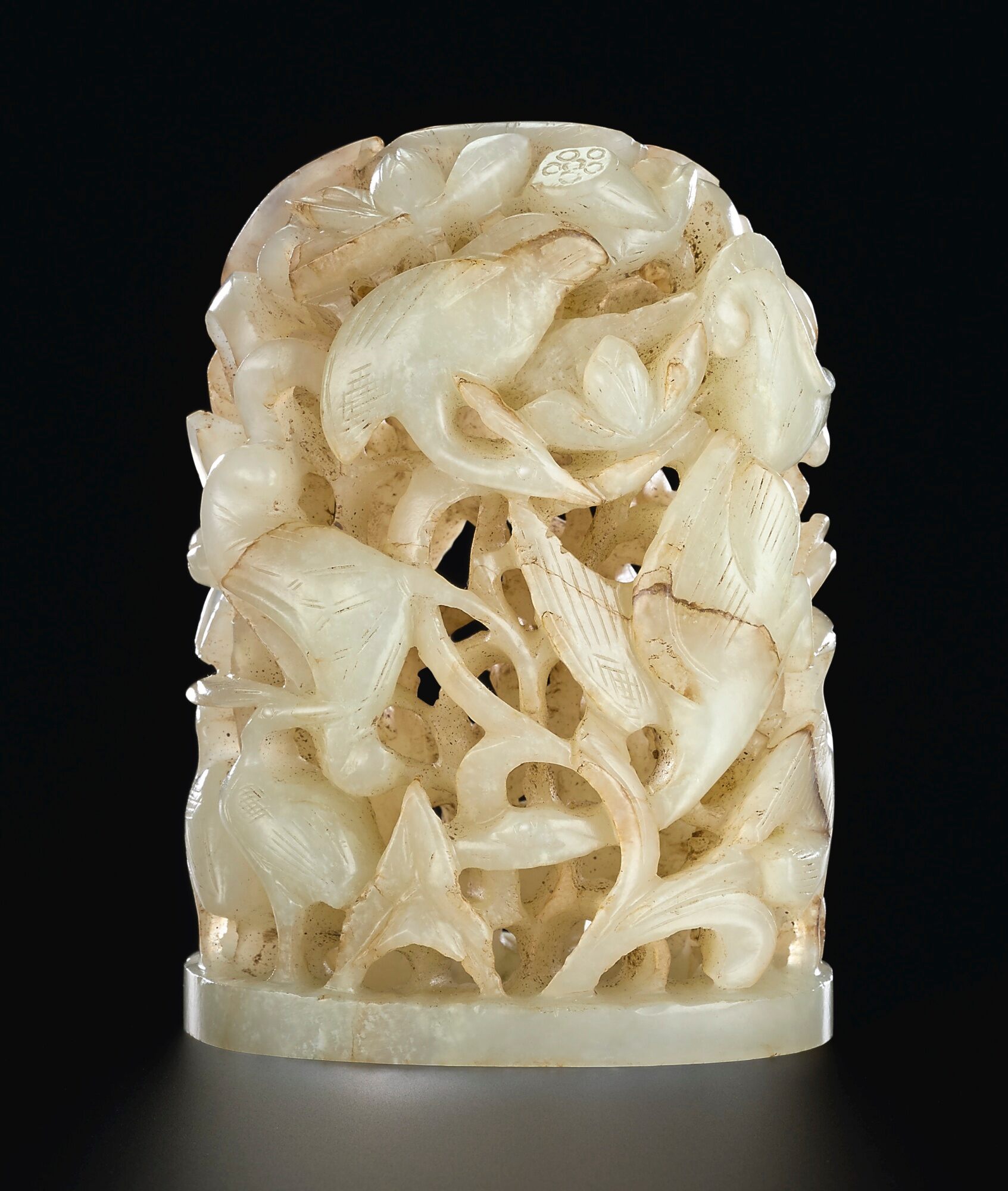
200,000 — 300,000港幣
拍品詳情
宋 白玉透雕鷺鷥蓮紋爐頂
8.8 公分,3 3/8 英寸
相關資料
爐頂白玉帶皮,扁圓柱形,通景鏤雕鷺鷥蓮塘圖。荷枝高壯茂盛,荷花、蓮蓬、荷葉交錯纏繞,九隻鷺鷥隱現其間。鷺鷥形態各異,或立或飛,栩栩如生。
此器鏤雕層次豐富繁縟,畫意盎然,立體感強,可見巧匠之鬼斧神工。
此爐頂飾九隻鷺鷥,意義深遠。古人用九隻鷺鷥入畫,寓儒家「九思」之美意。《論語.季氏篇第十六》孔子曰:「君子有九思:視思明,聽思聰,色思溫,貌思恭,言思忠,事思敬,疑思問,忿思難,見得思義」。以此紋飾體現君子道德修養的規限,常思考反省,使之合於禮義,頗見匠心。
乾隆御製詩<詠宋做玉爐頂>有曰:「刻畫為圖斯鼻祖,後人端是讓前人」。
靈動凝神:長壽坊珍藏肖生玉雕
2017年4月5日 | 上午 11:45 HKT
香港
参考:佳士得拍賣 8833
中國瓷器、工藝精品及紡織品
倫敦南肯辛頓|2013年5月17日
拍品1274|清 雕象牙龙印
PRIVATE EUROPEAN COLLECTION, ACQUIRED IN BELGIUM IN THE 1960’S AND THEN BY DESCENT (LOTS 1274-1276 INCLUSIVE).
AN IVORY ‘DRAGON’ SEAL
19TH CENTURY
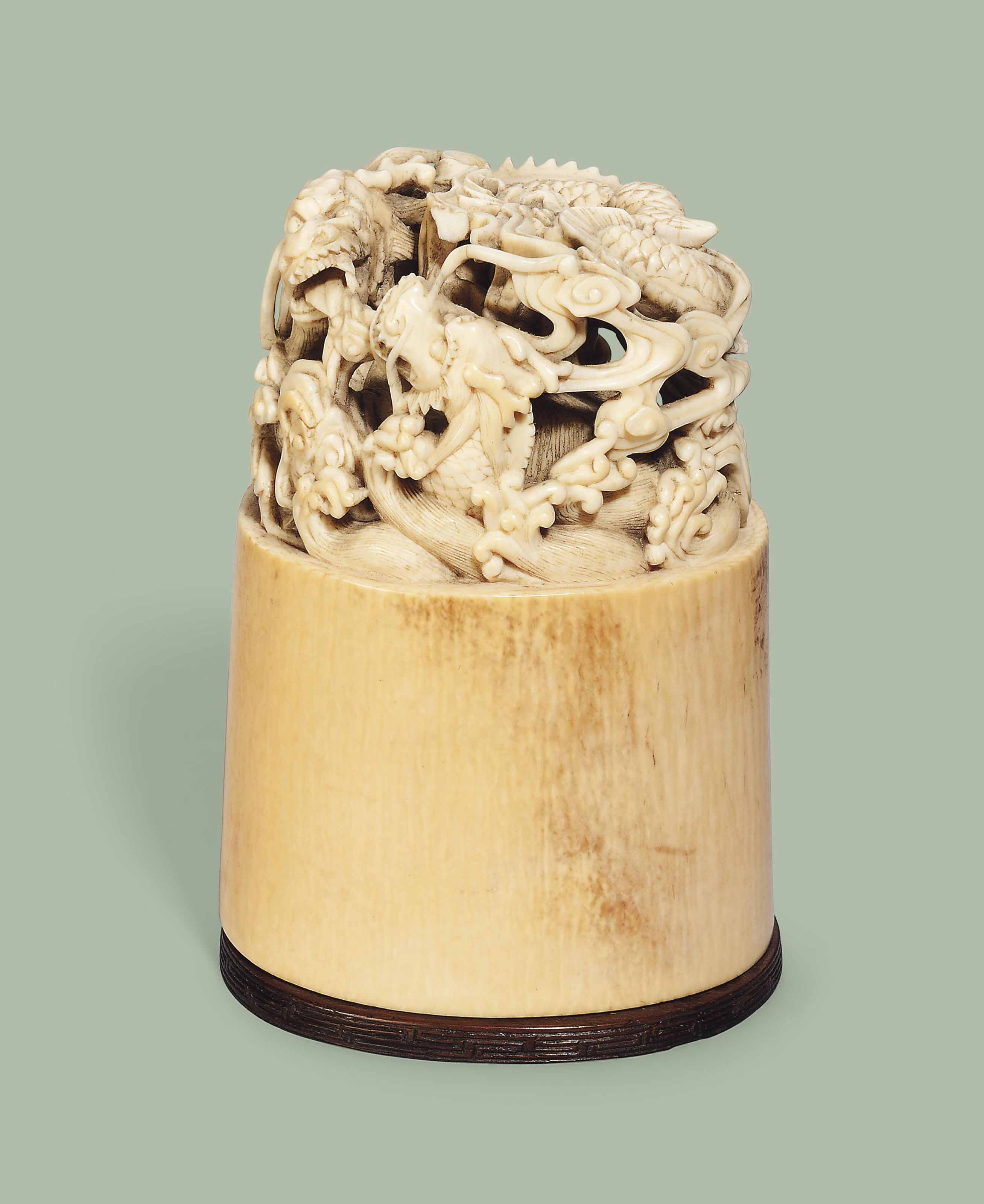
成交總額
GBP 5,250
估價
GBP 4,000 – GBP 6,000
AN IVORY ‘DRAGON’ SEAL
19TH CENTURY
The high oval seal is carved to the top with a pair of dragons amid cloud scrolls. The base is carved with an apocryphal six-character Qianlong seal mark.
4 5/8 in. (11.7 cm.) high, on wood stand
來源
Private European Collection, acquired in Belgium in the 1960’s and then by descent.
参考:佳士得拍賣 2862
重要中國瓷器及工藝精品
Hong Kong, HKCEC Grand Hall|2011年6月1日
拍品3930
元
灰白玉鏤雕穿花龍爐頂
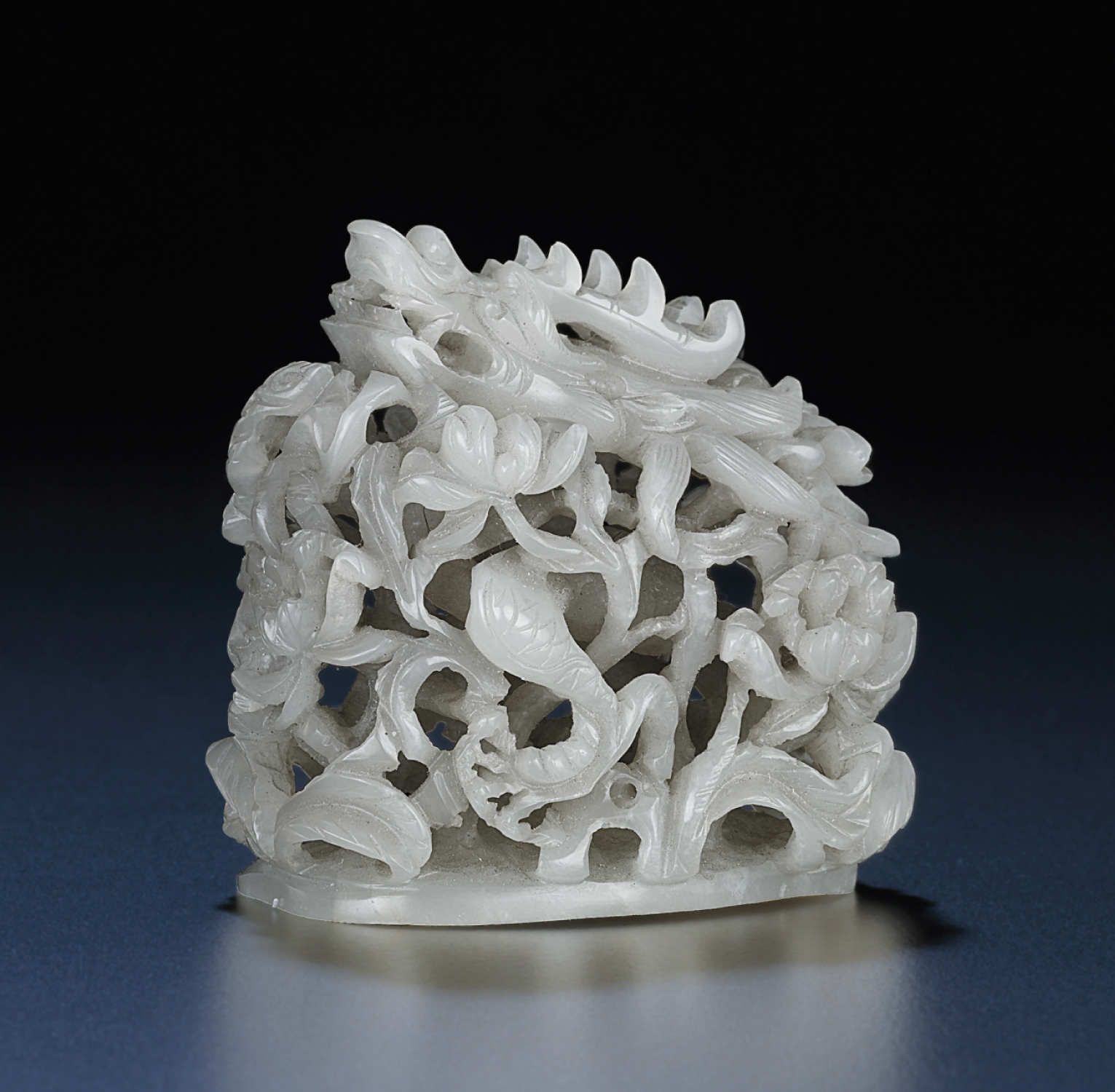
成交總額
HKD 437,500
估價
HKD 150,000 – HKD 200,000
灰白玉質,鏤雕穿花龍紋,所雕花葉繁茂,龍首穿花而出,神態威猛,線條流暢。相近的爐頂曾出土於1327年的元代墓葬,參見《文物》雜誌1982年第七期,圖版5號。
此器屬同式中大型例子。參考另一白玉質2008年12月3日於香港佳士得拍賣,拍品2617。
來源
Acquired from a French private collection
拍品專文
This form originates from the ‘autumn mountain’ hat finials which depicts deer and cranes symbolizing the hunting scene of the Jin dynasty (1115-1234). At later periods they were refitted as knots for covers of vessels. This size is of the largest in a wide range, discussed by J. Rawson, Chinese Jade: From the Neolithic to the Qing, London, 1995, pp. 338-339, no. 25:15.
参考: 拍卖结果 > 纽约苏富比2015年亚洲艺术品秋季拍卖会 > 中国艺术珍品 > 金/元 青玉镂雕龙穿牡丹纹钮
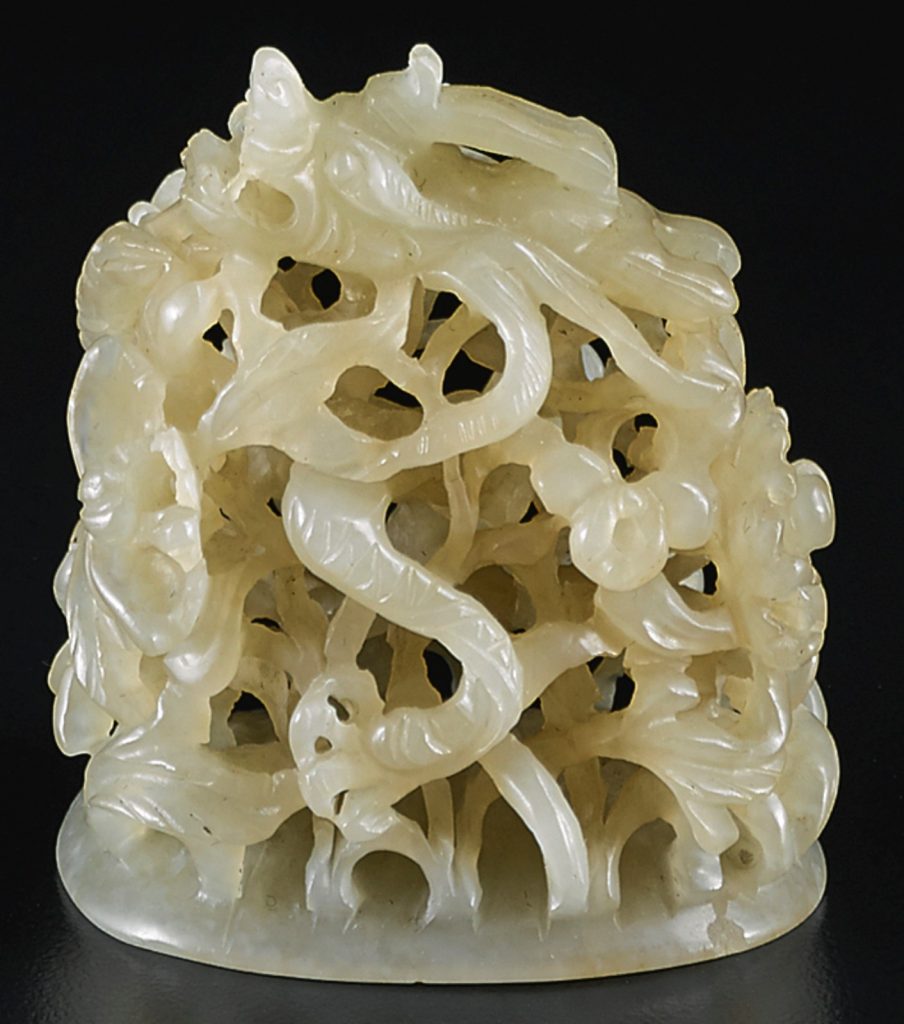
拍卖信息
Lot 188 金/元 青玉镂雕龙穿牡丹纹钮
估价:6,000-8,000 USD
成交价: 13,750 USD (含买家佣金)
尺寸:
高4.5cm
参考:CHINESE WORKS OF ART FROM THE COLLECTION OF EMIL HULTMARK
1 PROPERTY FROM THE COLLECTION OF EMIL HULTMARK (1872-1943)
A WHITE AND BROWN JADE RETICULATED ‘DRAGON’ FINIAL
YUAN DYNASTY
Estimate 40,000 — 60,000 HKD
LOT SOLD. 250,000 HKD
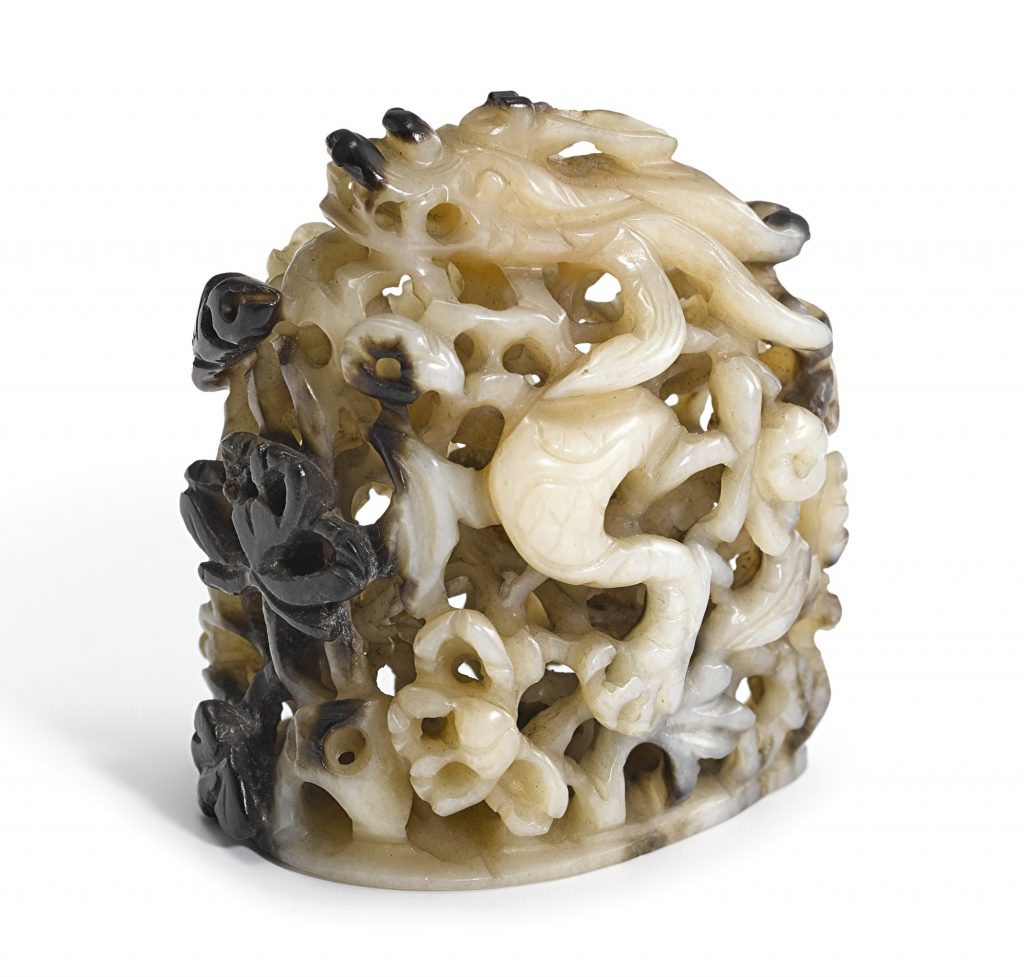
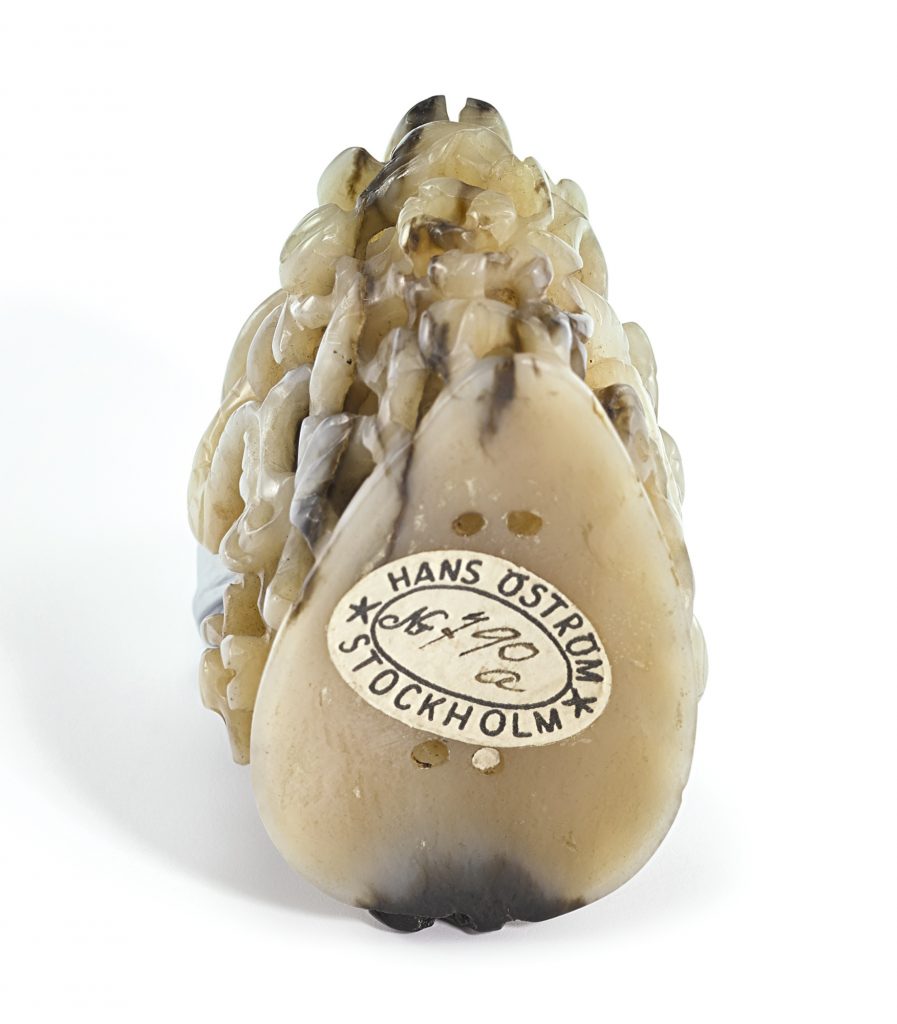
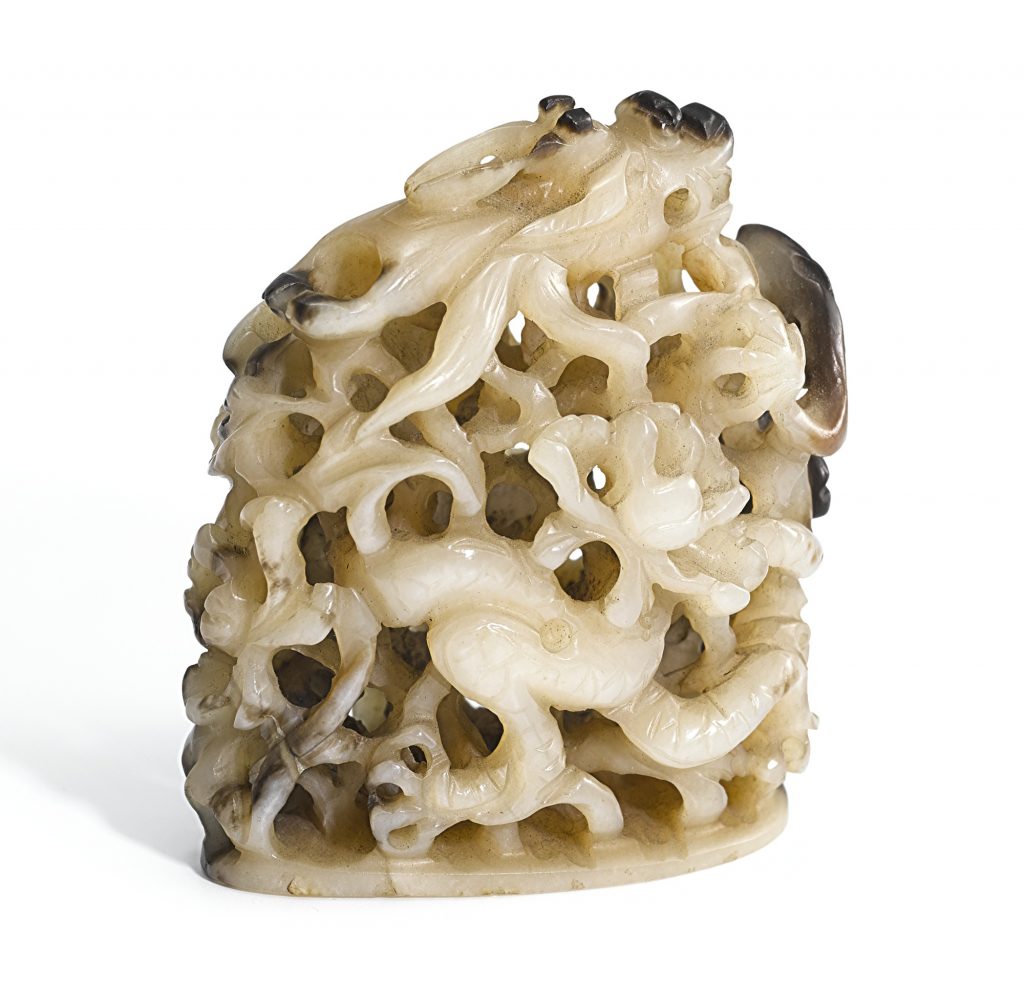
A WHITE AND BROWN JADE RETICULATED ‘DRAGON’ FINIAL
YUAN DYNASTY
skilfully reticulated as a sinuous dragon, the mythical beast rendered with incised mane and depicted entwined with dense clusters of floral scrolls, the pale celadon stone with brown inclusions
4.6 cm, 1 3/4 in.
PROVENANCE
Collection of Hans Öström, Stockholm.
Collection of Emil Hultmark (1872-1943), and thence by descent in the family.
CATALOGUE NOTE
A similar dragon finial, in the Taipei Palace Museum, was included in the Museum’s exhibition Age of the Great Khan. Pluralism in Chinese Art and Culture Under the Mongols, Taipei, 2001, cat. no. IV-7; another in the Palace Museum, Beijing, is illustrated in Compendium of Collections in the Palace Museum. Jade. Ming Dynasty, vol. 6, Beijing, 2011, pl. 110; and a third was excavated from the tomb of Prince Zhuang of Liang and Lady Wei at Zhongxiang, Hubei province, and included in the exhibition Ming. 50 Years that Changed China, British Museum, London, 2015, cat. no. 46. See also a Ming dynasty reticulated finial sold in these rooms 3rd October 2018, lot 3355, and another sold on 1st December 2016, lot 170, from the Muwen Tang Collection.
According to Brian S. McElney in ‘Han to Song Chinese Jades’, Roger Keverne (ed.), Jade, London, 1991, p. 118, ‘The relatively sudden appearance of such open-work [during the Jin-Yuan dynasty] probably resulted from improved techniques for carving jade, which must have been introduced at this time’. For several comparable examples in the British Museum and extensive discussion on these finials see Jessica Rawson, Chinese Jade: From the Neolithic to the Qing, London, 1995, pp. 338-339, no. 25:15.
—
A WINDOW INTO A GOLDEN AGE OF COLLECTING CHINESE ART IN EUROPE
The sale of the present selection of items from the collection of the Swedish academic Emil Hultmark (1872–1943) is a reminder of the pioneering role these collectors had in the development of our knowledge in the complex fields of the decorative arts of China. One of the co-founders of the ‘Kinaklubben’ (China Club) in Stockholm in the 1920s, together with Carl Kempe (1884–1967) and Crown Prince Gustav Adolf, Emil Hultmark was a contemporary of famous European collectors such as George Eumorfopoulos (1863–1939) and Sir Percival David (1892–1964) in England, and Alfred Baur (1865–1951) in Switzerland. While the Percival David and Eumorfopoulos collections are now preserved in the British Museum and the Victoria and Albert Museum in London and the Baur collection in Geneva, a significant part of the Hultmark collection is now kept alongside the Swedish Royal collection in the Museum of Far Eastern Antiquities in Stockholm, all similarly fulfilling an essential role in the teaching of Chinese Art in the West.
Collectors at that time would have had very little literature available at hand to identify the items they were acquiring, and mostly created their own literature and exhibition catalogues. They greatly relied on their exchanges with fellow collectors within clubs and antique societies to research their acquisitions and periodically exhibit their collections.
Several items in the present sale were included in an exhibition dedicated to his collection at the Royal Academy of Art in Stockholm in 1942 (fig. 1). This exhibition included Oriental art, but also 17th and 18th century Swedish paintings as well as silver and precious metalwork for which the Hultmark collection was famous.
Emil and Astrid Hultmark had a passion for their collection and displayed it in their homes, providing their visitors with a rare opportunity to discover this aesthetic. Chinese and Japanese arts were exhibited in several rooms of both their houses in Stockholm and Stogestrabo (fig. 2), as featured in an article dedicated to their households (Svenska hem i ord och bilder [Swedish homes in words and pictures], Stockholm, 1936. pp. 169-203). Their Stockholm residence at 32 Birger Jarlsgatan street even had two salons dedicated to an Oriental theme: a ‘black’ salon featuring black lacquer furniture and bronze and a ‘red’ salon with ceramics and lacquer works (fig. 3).
The selection of items in this sale is representative of the European collections at that time. Ranging from early metalwork and jades to early Ming ceramics, the present group is highlighted by an exceptional early 15th century ‘dragon’ box (lot 2) incised with the reign mark of the Yongle Emperor (1403–1424). Such boxes are extremely rare and mostly preserved in museum collections, with only a few examples ever offered at auction. Beside the example we sold in these rooms on 4th April 2012, lot 3200, the closest comparative would be the box from the Frederick Knight collection sold in these rooms on 18th May 1982, lot 45. This rediscovered masterpiece of Chinese lacquerware, and more generally the items presented in this sale, all acquired in Europe during the 1930s and kept in the family since then, provide us with a fascinating window into this golden age of European collecting.

![[临渊阁]天地一家春](https://www.antiquekeeper.ca/wp-content/uploads/2023/03/cropped-Asian-Art-Wallpaper-Painting3-6-2.jpg)







